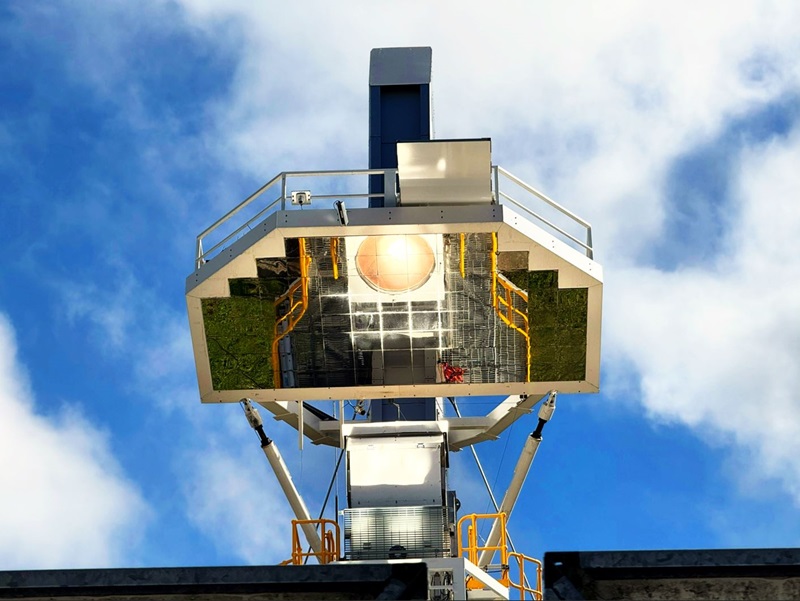Researchers from the Commonwealth Scientific and Industrial Research Organisation (CSIRO) in Australia have recently revealed an advanced method to produce green hydrogen using a beam-down solar reactor.
The technology offers a potentially more efficient and sustainable way to generate hydrogen for energy-hungry, high-temperature industries such as steelmaking, iron production, and alumina refining, which are all turning to hydrogen as a cleaner alternative solution to fossil fuels.
Although the concept appears to have been first developed years ago, it’s the first time it has been demonstrated in Australia.
Researchers equipped a large array of sun-tracking mirrors in the beam-down reactor to reflect sunlight onto the top of a central tower, which then redirects the light downward to a solar reactor. Within this reactor, particles of a specially modified mineral oxide, known as doped ceria, are heated.
Modifying the oxide helps to enhance the material’s ability to absorb and release oxygen at a lower temperature than it normally would. The reactor then splits water, which is in the form of steam at that time, into hydrogen and oxygen. Here, the doped ceria acts as a catalyst, absorbing oxygen from the steam and leaving hydrogen behind, which can then be captured.
The CSIRO team’s experiment has shown an impressive outcome that demonstrates a solar-to-hydrogen efficiency exceeding 20%. This represents a significant improvement over existing hydrogen production methods, which typically achieve around 15% efficiency.
In addition, the doped ceria catalyst can be reused multiple times, which can enhance the economic viability of the process.
Today, heavy industries utilize hydrogen because it can replace fossil fuels in combustion processes while producing only water vapor as a byproduct instead of CO2 emissions.
However, producing hydrogen through existing processes like electrolysis consumes a lot of energy. Therefore, greenifying the production of hydrogen itself is another necessary step to reduce the impact of these industries on the environment.
While still in the developmental stage, the CSIRO’s technology is adding up to a promising path forward in decarbonizing critical energy-intensive industries. According to CSIRO’s Dr. Jin-Soo Kim, further refinement of the process will lead to even greater efficiency and cost-effectiveness, potentially matching or even surpassing electrolysis in performance.
Furthermore, this innovative approach to solar-powered hydrogen production also presents a significant step towards a more sustainable industrial future.
Image & article source by CSIRO


